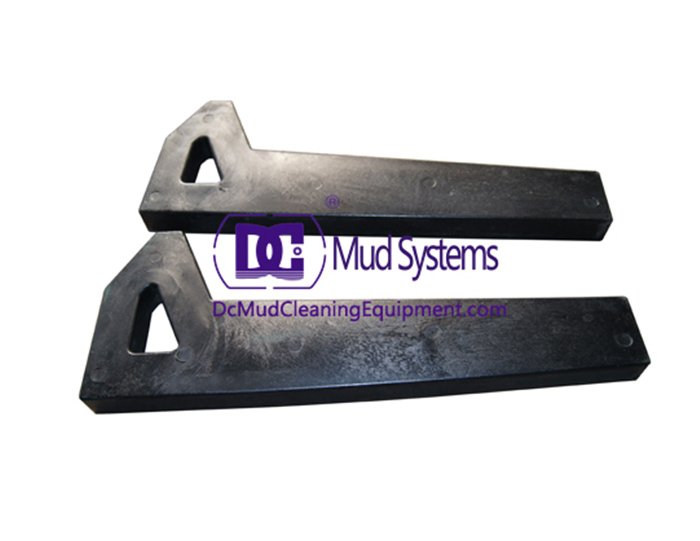In the ever-evolving landscape of drilling operations, efficiency is paramount. As companies strive to maximize productivity while minimizing costs, the role of shaker screens has become increasingly significant. These essential components of drilling fluid management systems are pivotal in optimizing drilling performance. This article explores how shaker screens enhance drilling efficiency through improved solids control, reduced fluid loss, and increased operational reliability.
Understanding Shaker Screens
Shaker screener are vital tools used in the separation of drilling cuttings from the drilling fluid, or mud. Positioned on shale shakers, these screens facilitate the removal of solid particles from the circulating fluid, allowing for effective recycling and reuse. The design of shaker screens, including mesh size, material, and configuration, plays a crucial role in determining their effectiveness in solids control.
The efficiency of shaker screens is influenced by several factors, including the type of drilling fluid used, the nature of the geological formations being drilled, and the specific requirements of the drilling operation. As such, selecting the appropriate shaker screen is critical for optimizing performance.
Improved Solids Control With Shaker Screens
One of the primary roles of shaker screens is to enhance solids control in drilling operations. By effectively separating solid cuttings from the drilling fluid, shaker screens prevent the accumulation of unwanted materials in the fluid. This not only maintains the desired viscosity and density of the mud but also ensures optimal performance throughout the drilling process.
Effective solids control leads to several advantages. Firstly, it reduces the wear and tear on drilling equipment, extending the life of components such as pumps and bits. When solid particles are allowed to circulate within the fluid, they can cause abrasions and damage to sensitive equipment. By keeping the drilling fluid clean, shaker screens help maintain the integrity of the entire drilling system.
Additionally, improved solids control enhances the overall drilling efficiency. Clean drilling fluid provides better lubrication for the drill bit, allowing it to penetrate rock formations more effectively. This results in faster drilling rates and reduced operational downtime, ultimately contributing to cost savings.
Reducing Fluid Loss With Shaker Screens
Fluid loss during drilling can pose significant challenges, impacting both efficiency and costs. When drilling fluid is lost to the formation, it can lead to a variety of issues, including wellbore instability and the need for additional fluid to be added to the system. Shaker screens play a critical role in minimizing fluid loss by effectively retaining the desired properties of the drilling mud.
By efficiently separating cuttings from the fluid, shaker screens help maintain the viscosity and density required to keep the drilling operation stable. This is particularly important in challenging drilling environments, where fluid loss can lead to serious complications. A stable drilling fluid helps to support the wellbore and prevent collapses, ensuring a safer and more efficient operation.
Moreover, by recycling the drilling fluid through the shaker screens, operators can significantly reduce the amount of fresh fluid needed for each drilling operation. This not only cuts costs but also minimizes the environmental impact associated with the extraction and disposal of drilling fluids.
Enhancing Operational Reliability With Shaker Screens
Reliability is crucial in drilling operations, where downtime can lead to significant financial losses. Shaker screens contribute to operational reliability by ensuring consistent performance throughout the drilling process. High-quality screens designed with advanced materials and technologies are less prone to failure, reducing the likelihood of unexpected downtime.
The selection of the right shaker screen is essential for achieving reliable performance. Factors such as the mesh size, material composition, and screen configuration should be carefully considered based on the specific drilling conditions. Advanced technologies, such as composite screens and polyurethane materials, provide enhanced durability and flexibility, allowing for improved performance in demanding environments.
Furthermore, regular maintenance and monitoring of shaker screens are vital for ensuring their continued effectiveness. Implementing a proactive maintenance program can identify potential issues before they escalate, minimizing disruptions and maintaining the efficiency of the drilling operation.
Integration with Advanced Technologies About Shaker Screens
The integration of shaker screens with advanced technologies has further enhanced their role in drilling efficiency. Modern drilling operations often utilize real-time monitoring systems that track the performance of shaker screens and the characteristics of the drilling fluid. This data-driven approach allows operators to make informed decisions regarding adjustments to the drilling process.
For instance, by analyzing the solid content in the fluid and the performance of the shaker screens, operators can optimize the settings on the shale shakers for maximum efficiency. This continuous feedback loop enables real-time adjustments, ensuring that the drilling operation remains efficient and responsive to changing conditions.
Additionally, advancements in automation and robotics are being incorporated into shaker screen systems. Automated systems can monitor and adjust the operation of shale shakers without human intervention, further enhancing efficiency and reliability.
 Linear Motion Shale Shaker In Drilling Rig
Linear Motion Shale Shaker In Drilling Rig  Oilfield Mud Cleaner
Oilfield Mud Cleaner  Drilling Fluid Decanter Centrifuge
Drilling Fluid Decanter Centrifuge Drilling Mud Desander
Hydrocyclone Desilter
Centrifugal Pump/Centrifugal Mud Pump
Shear Pump
Jet Mud Mixer
Horizontal Mud Agitator
Constant Pressure Drilling Fluid Mud Gas Separator
Mud Gun
 Mud Tank
Mud Tank Solids Control System Vacuum Degasser
 Flare Ignition Device
Flare Ignition Device  Diesel Tank
Diesel Tank  Submersible Slurry Pump
Submersible Slurry Pump 



































